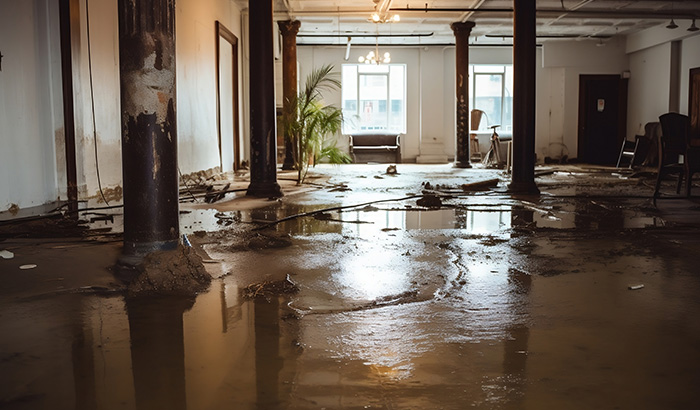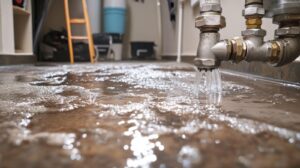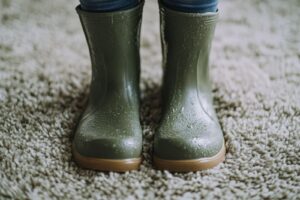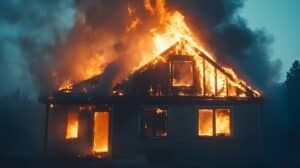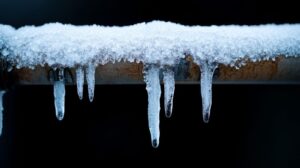Water damage can be devastating and costly to repair, especially because preventing damage is not always at the forefront of a homeowner’s mind.
Water damage claims are among the most common types of insurance claims submitted for homeowners and renters. It’s a concern all year, but the good news is that there are precautions you can take to safeguard your property from water damage.
Discover the best strategies to avoid water damage before it causes major harm to your home and property. Continue reading to learn more.
Indoor Water Damage
Water damage can seriously affect your home, and that damage can be expensive. You’ll be seeing dollar signs, but not in the way you want. Plus, water damage cleanup is a headache to deal with.
Conducting frequent inspections around your home can help stop the problem before it escalates, but how do you know where to check? Here are four main spots to inspect for water damage inside your home:
- The kitchen – The kitchen is a high-risk area for water damage in the home, and refrigerators are one of the most common offenders. They leak for a variety of reasons, including clogged defrost drains or water supply lines, as well as ice maker failures.
Dishwashers can also leak as a result of a malfunctioning door lock, a rusted tub, or loose or damaged valves. A water leak sensor strategically installed beneath the kitchen sink, refrigerator, or dishwasher, as well as regular cleaning and maintenance, will help you stay on top of any leaks and prevent costly water damage.
- The basement – Basements are a popular location for water damage. Water damage will occur in up to 98% of basements in the United States during their lifetime. This is because of seepage, which can occur from natural groundwater or even during a severe downpour. A home’s hot water heater is often housed in the basement, and it can leak if there is too much pressure within the water heater tank or if the pressure relief valve or drain valve is loose or damaged. Make it a routine to check for leaks around your water heater at least once a month. Low water pressure and rusty water are further indicators that your hot water heater requires professional servicing.
- The bathrooms – Another place that can suffer extensive water damage is the bathroom. There are several issues with toilets, sinks, showers, and baths. Furthermore, high humidity on a frequent basis might lead to mold and mildew growth. Check for symptoms of leaks, such as discoloration on the walls or floors, on a regular basis to safeguard your bathrooms from water damage.
After taking a shower or bath, place bathmats on the floor and always check around them for water. Turn on the fan to reduce humidity during and after the shower. De-clog your sink and shower drain on a regular basis. In addition, have a professional replace old fixtures and tiles that could lead to water damage.
- The laundry – When it comes to laundry room water damage, there are numerous potential causes. Just like everywhere else, inspect your washer on a regular basis. Washing clothes consumes a substantial amount of water; washing machines may overflow during operation, or a hose could burst. If this happens when you’re not at home to catch it, you could face major and costly damage.
With so many possibilities for water damage, it can almost seem unavoidable. However, with the proper preparations, you can avoid water damage and the emotional and financial toll that it entails.
Outdoor Water Damage
Water damage doesn’t only affect the inside of your home — there are many areas outside your home that can be hotspots for water damage, too. Here are three more spots to check to avoid water damage cleanup outdoors.
- Gutters – Rain gutters are a crucial component of your home’s roofing system. They direct rain and runoff away from your property and its foundation. Water damage down the external walls of your home can be caused by missing, cracked, broken, or clogged gutters, and large volumes of water cascading over your gutters can damage the foundation and/or leak into your crawlspace. We recommend inspecting and maintaining your gutters regularly to avoid these issues.
- Water hose – A garden hose is a significant source of outdoor water damage. Extensive destruction can occur if your hose is leaking or running slowly. Water can cause problems as it slowly soaks through your home’s foundation or lower components. Because these are typically hidden from view, it is easy to underestimate the severity of the condition until it’s much too late. Wood decay, mold, soil erosion, and concrete cracks are all highly expensive to repair if not treated quickly. Don’t dismiss symptoms of water damage produced by a running hose if you encounter them near your property.
- Roof – Making sure that your roof is up to date and properly maintained is key to avoiding water damage. First, thoroughly inspect the shingles a few times each year. Each season brings difficulties that are specific to the weather patterns prevalent at the time.
Examine the shingles for signs of extreme wear or deterioration, noting any that are completely missing and must be replaced. Regularly remove leaves and debris from your roof and gutters. Roof debris cleaning successfully protects your home from harm and even prevents the growth of moss, lichen, and algae.
Steps to Water Damage Restoration
Now that you understand how to prevent and check for water damage inside and outside of your home, here are the typical steps for water damage restoration:
- Assess the damage – To establish the extent and severity of the water damage, a skilled repair team conducts a thorough assessment. They locate the source of the water incursion, evaluate the damaged areas, and classify the water damage based on cleanliness and contamination levels. This assessment aids in the development of a detailed restoration plan as well as the estimation of the scope of repairs required.
- Water removal – Effective water damage cleanup is essential to avoid further damage and mold growth. To remove standing water, restoration contractors employ powerful water extraction equipment such as submersible pumps, wet vacuums, and truck-mounted extraction systems. They also use moisture detection instruments to find hidden pockets of water and remove them completely.
- Drying – After removing the excess water, the affected area must be completely dried to prevent mold growth and further damage. To extract moisture from walls, floors, and other structural parts, restoration professionals employ a combination of dehumidifiers, industrial-strength air movers, and specialized drying processes. Moisture levels are monitored on a regular basis to guarantee appropriate drying and to prevent secondary damage.
- Mold remediation – Mold remediation solutions are used by restoration businesses to safely remove and restore mold-infested areas. Containing the affected area, filtering the air to remove spores, disposing of mold-contaminated goods, and administering antimicrobial treatments to prevent recurrence are all part of the process.
- Deodorization and sanitization – Water damage can cause unpleasant odors and contaminants. To deodorize and disinfect the afflicted area, restoration professionals will clean the area, use an air purifier, and neutralize smells with deodorization.
- Repairs – Once the area is dry and clean, restoration teams begin structural repairs. Repairing damaged walls, floors, ceilings, and other structural components may be included. If plumbing troubles are the source of the water damage, plumbing repair services might be necessary.
- Electrical system – Water damage can cause electrical hazards and concerns, demanding a full review of the electrical system. Electrical components and wiring are inspected by restoration professionals to identify potential risks or damage. They execute essential repairs or cooperate with certified electricians to ensure the safety and functionality of the electrical system.
- Communication – Reputable restoration businesses have open lines of communication with their consumers throughout the repair process. They offer regular updates on the restoration’s progress, resolve any issues or queries, and ensure transparency throughout the process. Restoration contractors also advise homeowners or property owners on necessary safeguards and post-restoration upkeep to ensure the integrity of the repaired property.
Remember that depending on the severity of the damage and the type of water involved, the timetable for water damage restoration may vary. Time is of the essence, and it’s critical to act quickly to limit the degree of damage and avoid subsequent issues such as mold growth.
Black Diamond Water Damage and Disaster Restoration Is Here for You
Even if you’ve done everything possible to avoid water damage, accidents do happen. That is why Black Diamond Water Damage & Disaster Restoration is available to assist you. Call us right away since prompt treatment is critical to repairing your property and preventing future damage.
We provide water damage restoration and mold remediation services throughout Salt Lake City, Utah, as well as the surrounding cities of West Valley, Sandy, Murray, and more. We also offer fire, sewage, and other emergency restoration services 24 hours a day, seven days a week, so give us a call whenever calamity hits!
toto slot
